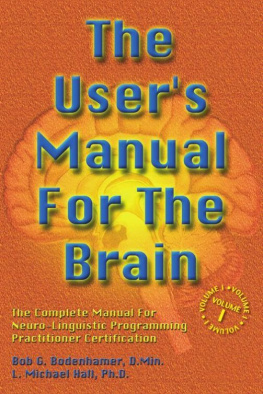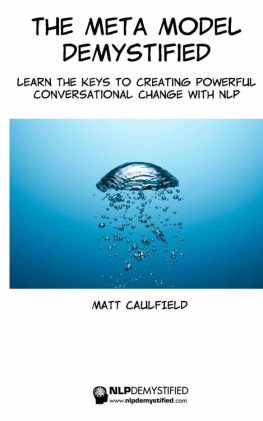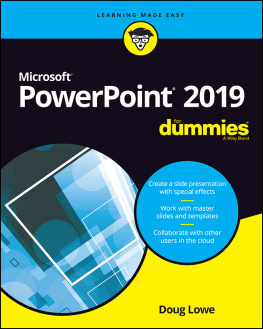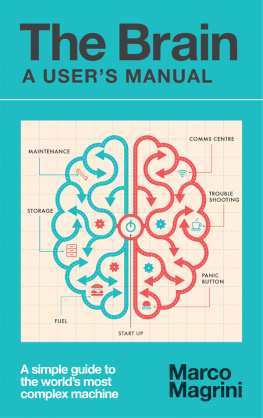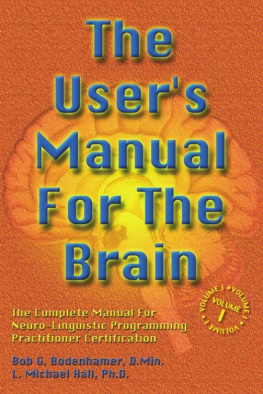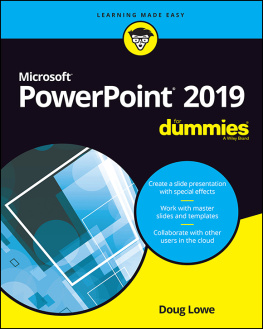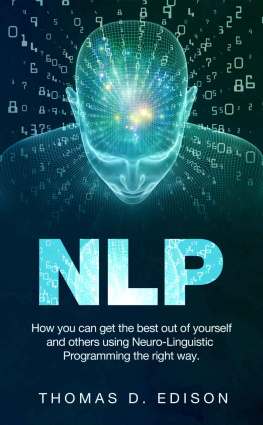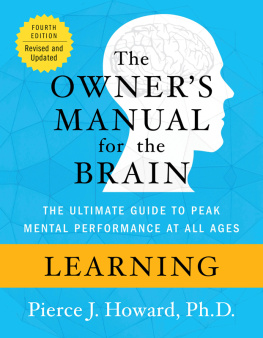To get the most out of your studies of Neuro-Linguistic Programming and this book, we suggest the following:
1) Obtain and devote a notebook to your reflections, insights, practices, and exercises. The neuro-muscular action of actually writing will reinforce your learnings in kinesthetic ways and drive in the knowledge in ways that transcend conscious understanding. Further in the future, you will probably find it helpful and insightful to return to your notes, insights, ideas, and practice drills.
2) When you come to exercises, thought experiments, and laboratories dont cheat yourself. Stop. Do the exercise. Involve others in your study. Several of the exercises involve up to five people, although you can go through most exercises with just two people.
3) Build your own indexing system between parts of the Manual. This will reinforce your learning of NLP, the components in the domain, and give you practice in moving around inside the Manual.
4) We have included Key Sentences and Concepts in text boxes. Upon request, you may purchase Overhead Mats for you to create training overheads that parallel the text boxes. These will enable the NLP Trainer to align their training with the students Manual.
The Story Of Magic In Human Neuro-Linguistics
NLP is an attitude and a methodology that leaves behind a trail of techniques.
Richard Bandler
Neuro-Linguistic Programming (NLP) represents a relatively new discipline dating back only to the mid-70s. Behind NLP stands a respectable body of knowledge. NLP originated from several different intellectual disciplines as organized by two co-foundersRichard Bandler and John Grinder.
It happened once upon a time when Dr. Grinder served as a professor of linguistics at the University of California in Santa Cruz. Bandler came there as a student to study mathematics and computers. Dr. Grinder, in fact, had already published several books in the field of linguistics known as Transformational Grammar.
Bandler discovered that he had a natural gift for modeling and hearing patterns. He discovered he could detect and replicate patterns in Gestalt Therapy from minimum exposure. He became an editor for several of Fritz Perls books in Gestalt Therapy. Being familiar with Perls work, Bandler began to study Perls techniques. As he discovered that he could model Perls therapeutic procedures, he began experimenting with clients using the techniques.
After enjoying immediate and powerful results from that modeling, Richard discovered that he could model others. With the encouragement of Grinder, Bandler got the opportunity to model the worlds foremost family therapist, Virginia Satir. Richard quickly identified the seven patterns that Virginia used. As he and John began to apply those patterns, they discovered they could replicate her therapies and obtain similar results.
As a computer programmer, Richard knew that to program the simplest mind in the world (a computer with off-and-on switches) you break down the behavior into component pieces and provide clear and unambiguous signals to the system. To this basic metaphor, John added his extensive knowledge of transformational grammar. From transformational grammar we borrow the concepts of deep and surface structure statements that transform meaning/knowledge in the human brain. From this they began to put together their model of how humans get programmed, so to speak.
Thereafter, world-renowned anthropologist Gregory Bateson introduced Bandler and Grinder to Milton Erickson, MD. Erickson developed the model of communication that we know as Ericksonian hypnosis. Since 1958, the American Medical Association has recognized hypnosis as a useful healing tool during surgery. As Bandler and Grinder modeled Erickson, they discovered they could obtain similar results. Today many of the NLP techniques result from modeling Ericksonian processes.
From these experiences and their research into the unifying factors and principles, Bandler and Grinder devised their first model. It essentially functioned as a model of communication that provided a theoretic understanding of how we get programmed by languages (sensory-based and linguistic-based) so that we develop regular and systematic behaviors, responses, psychosomatic effects, etc. This model went further. It also specified ways for using the components of subjectivity for creating psychological (mental-emotional) improvement and change.
From that point, NLP expanded. The model expanded by incorporating materials from other disciplines: cybernetics (communication within complex systems both mechanical and living), philosophy, cognitive psychology, studies of the unconscious mind, and neurology. Today, NLP has institutes worldwide and numerous authors have applied NLP to medicine and health, therapy and psychological well-being, business, education, athletics, law, Christian ministry, etc.
The Study Of Excellence
NLP primarily focuses on studying excellence. In the 1983 book, Neuro-Linguistic Programming, Volume I, the authors subtitled NLP, The Study ofthe Structure of Subjectivity. The subjectivity that most NLP theorists, developers, and presenters have focused on involves those highest and mostexcellent facets of human experiencehigh level experiences of creativity, excellence, genius, etc. Co-developer Robert Dilts has especially focused on this area, writing a series of books and numerous journal articles on TheStrategies of Genius.
NLP offers a model forlearning how to recognizeexcellence and how toemulate it.
Teachers who want to improve model the best teachers. NLP offers a model for learning how to recognize excellence and to emulate it. NLP focuses on recognizing excellence and how to specifically chunk it down into the component elements and the syntax (or order) for installing it in others.
In this step-by-step fashion, the NLP model instructs us how to achieve excellence. Do you wish to improve your ability to communicate? NLP provides a model for communication excellence. Would you like to know how to build and maintain rapport? NLP chunks these skills into teachable formats. Does your child have difficulty spelling? NLP has identified the structure of excellent spellers and the process for training them to become champion spellers. Would you like to conduct successful negotiations in committee meetings? NLP offers a high quality performance model for negotiating with others around difficult issues.
Counselors usually experience a great thrill when they help to bring about positive change in people. NLP offers not only a state-of-the-art theoretical foundation for such, but also the techniques for bringing about personal change.
The Experiential Nature Of NLP
As you read and use this NLP Training Manual, you will discover theexperiential nature of NLP. What does that mean? It refers to the emphasis in NLP on modeling, experimenting, and testing in contradiction to theorizing and hypothesizing. When people ask in our trainings, Does NLP work?, we get them to put it to the test, right then and there to see if a particular pattern works for them. Expect this hands-on immediate testing of the model.
This suggests that the best way to understand NLP involves experiencing it. Let us do this as we begin. The following mental exercise (a mind experiment) will introduce you to NLP. As you read the instructions, take time to follow the directions. This will enable you to become more attuned to what a unique creation you have in your mind-and-body and nervous system. We will work with the natural processes of your mind. By doing this, you will discover many of

